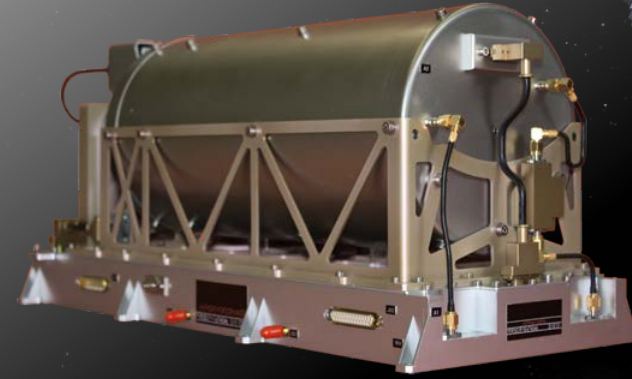Navigation satellites couldn't accomplish anything without extremely accurate clocks. But a regular clock won't do. Only atomic clocks are accurate enough, and that's because they tell time with electrons.
Those atomic clocks wear out over time, and that's what the image shows.
The strange forms are reminiscent of penitentes, the unusual landscape features found in cold environments like the Atacama desert. They're also found on Pluto, though they're the size of skyscrapers there.
The leading image has nothing to do with alien landscapes. It's from a scanning electron microscope. It shows the surface of test glass from a project aimed at improving the lifetime of atomic clocks in the Galileo Navigation Satellite System (GNSS.) Each of these peculiar marks is smaller than one-hundredth of a millimetre. They're the result of plasma interacting with the glass surface inside an atomic clock and degrading it over time.
The ESA is working on improving the atomic clocks in the GNSS. The system has 30 satellites, with 24 in full service and six acting as spares. Each of the satellites has four atomic clocks: two passive hydrogen maser (PHM) clocks and two rubidium clocks as backups. In 2017, six of the hydrogen and three of the rubidium clocks on some of the satellites failed. Operations weren't affected because of the backup clocks. But failures like it are driving the ESA to improve the clocks. The clocks on the GNSS last about 20 years, and the ESA would like to extend their lifetime.
Passive hydrogen masers are based on electrons orbiting atoms. Electrons can gain and lose energy, and each time they do, they change energy states. In a PHM, a maser is used to stimulate electrons into changing energy states. When they do, they emit microwave signals at an extremely stable frequency. That stability gives the clocks on the Galileo satellites their extreme accuracy: they're only off by one second every three million years.
PHMs are extremely complex. A detailed description of how they work is here. Two separate glass bulbs play key roles in the clock and its accuracy. One is a plasma confiner, and inside of it, hydrogen molecules are separated into hydrogen atoms. But the plasma degrades the inside of the bulb, and the degradation affects the atomic clock's lifetime.
The leading image shows the damage on the inside of the glass bulb caused by the plasma and associated effects. The goal is to extend the life of the bulb, which extends the life of the clocks, and the life of each satellite in the GNSS.
Accuracy is extremely important in navigation satellites. Even a tiny inaccuracy can compound and lead to larger errors. That's why these extremely complex and accurate PHMs are used. If the clocks are out by as little as three nanoseconds, then a user's location on the Earth's surface can be off by one meter.
But accuracy isn't a problem. The lifetime of the PHMs is the bottleneck. The ESA and EU are planning their next generation of Galileo satellites, a system that serves over four billion users. It's called Galileo Second Generation (G2G) and will begin deploying this year. These tests are aimed at making these and future navigation satellites have longer lives.
 Universe Today
Universe Today


